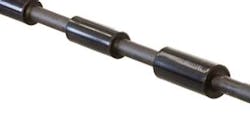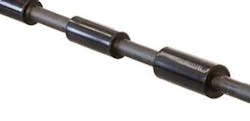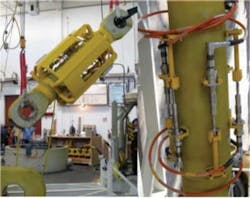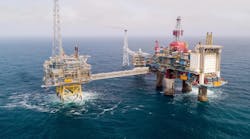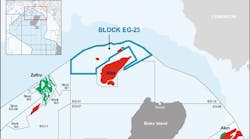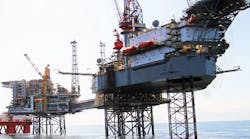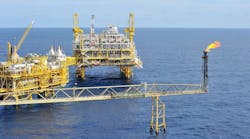Michael Konopczynski
Colin McKay
WellDynamics, a Halliburton company
Intelligent completion technology today is beyond the well-by-well approach of the past and contends with the challenges of elaborate, field-wide management installations.
Intelligent well completion systems are proven to be reliable for a broad range of operation in multi-zone, field-wide deployments. The new-generation technology will make it possible for intelligent completions to advance beyond field optimization to improve ultimate recovery.
One challenge is the vast amount of data acquired from these completions. To provide a complete picture that enables timely response, data must be reconciled with reservoir models. To avoid an information overload, the industry has adopted automated, closed-loop systems (the same solution adopted by many process industries) that can delegate many field management functions to software.
This process of streamlining the workflow gives new ways of thinking about efficiency. Instead of using data to respond to changes as they occur, the next step is to predict the onset of a problem and take action beforehand.
Typical multilateral SmartWell completion.
Data acquisition and wellbore control are merged in the latest generation systems. This combination makes it possible to manage day-to-day operations with real-time reservoir models and to act on this wealth of well data to open, close, or choke individual well intervals to improve field-wide benefits.
Intelligent completions are at the point where five or more zones are included in the design, with instrumentation for flow, temperature, and pressure sensing. Often this is for service in extreme high-pressure/high temperature (XHP/HT) environments.
These systems provide zonal isolation and flow control, reservoir monitoring, and surface control and data acquisition capability. They optimize well production and reservoir management processes by enabling the operator to remotely monitor and control well inflow or injection downhole, at the reservoir, without physical intervention.
Some drivers of this trend include increasingly complex reservoirs, mature assets, rising well costs, and the strategic importance of deepwater and ultra deepwater assets to operators. More complex recovery mechanisms are being applied through secondary (waterflood) and tertiary EOR (chemical, CO2, and steam).
Building control and reliability
The earliest intelligent completion effort simply was to open and close valves. Reliability and other issues led to the demise of these complex electro-hydraulic systems and drove the change to simple intervention avoidance and today’s very dependable hydraulic systems.
Modern systems generally feature variable chokes for greater increments of control based on real-time downhole data. The advance has come with technology innovation on several fronts.
Downhole hardware -- valves, packers, and gauges -- is more robust, with the ability to handle deepwater extremes of 25,000 psi (172 MPa) and 392° F (200° C). This enables controlled monitoring and commingling of multiple deep reservoirs while avoiding future intervention costs.
Additional monitoring via position sensors is integrated with the control valves and gauge systems to provide real-time valve position data. Because reliability and installation efficiency are critical in extreme well conditions, advances also have been made in downhole valve debris tolerance and differential pressure levels up to 15,000 psi (103 MPa).
Reliable operation and data volume, when combined with integrated workflows, enable remarkable yields in real-time production optimization.
Brunei sets early standards
Intelligent completions have evolved in concert with the operational and economic demands of modern reservoirs. That advance toward increasingly sophisticated production optimization and reservoir management is illustrated in the following milestone projects using Halliburton intelligent systems.
In 2004, the Champion West development offshore Brunei adopted intelligent well systems. The field was developed as a fully integrated, remotely controlled and operated project. Pressure, temperature, fluid and flow data is collected continuously for online monitoring and control.
Latest generation Permanent Downhole Gauge.
SmartWell completion systems were selected because many of the 2- to-3-km (1.2- to 1.9-mi) long horizontal wells failed to produce from the toe of the lateral despite significant production from the heel. Also, drawdown was not well-balanced, resulting in early water or gas breakthrough, leaving substantial reserves in the mid-section to the toe.
To provide selectivity, even drawdown, and good well cleanup from heel to toe, the project employed an open-ended stinger with a variable choke or fixed sliding sleeve run into the horizontal sections to clean up and drain the unproduced sections. The design allowed combinations of production -- 100% from the toe, balanced production, or 100% from the heel. The SmartWell completion also provided indications of section flow and external casing packer function.
North Sea zonal control
In 2005, the Snorre reservoir in the Norwegian sector of the North Sea was the first to install surface-operated zonal control, which provided the means for selective production from different sections of the reservoir.
The water-alternating-gas (WAG) injection project faced breakthrough of injection gas. Intelligent completion technology controlled the breakthrough by managing production or injection. To shut off gas in the producer, sliding sleeves were operated and monitored, which enabled monitoring of the initial production profile. This also helped identify and shut off the contributing zone.
An alternative to managing producers was the less-common method of selective injection. This involved real-time modification of the injection profile to control gas breakthrough.
Shown here is a diagram of the new production optimization concept. Courtesy Halliburton.
Routine operation generated considerable information. Actively operating zonal controls provided data to help locate future wells and to identify underperforming zones.
Data overload was a challenge. An increase in the number of downhole pressure and temperature gauges made it difficult to identify important well events.
Testing of software to help manage this data showed the advantages of real-time optimization. Reducing the time from event detection to action improved production.
Middle East management
In 2007, the Haradh-III development in the giant Ghawar field in Saudi Arabia led the industry in its application of advanced drilling techniques, multilateral wells, intelligent completions, and permanent monitoring systems.
The intelligent fields concept was incorporated to continuously monitor key reservoir parameters and real-time data transmission from downhole to the desktop. The surface infrastructure was designed with the communication and power facilities required to connect all the wells to the field SCADA. The field communication infrastructure was on an open architecture to integrate the well controls as an independent subsystem to the field control system.
The field was developed with 32 maximum reservoir contact (MRC) multilateral wells with intelligent completions on 28 wells. This reduced the well count required while achieving higher productivity from each well.
Studies show a resulting delay in water encroachment and improved flood front conformance and recovery, with lower water production and reduced opex.
System dependability was high with an installed reliability of 97%.
Each production string consisted of SmartWell equipment run in the motherbore. This equipment included two control line packages — one for the intelligent completion equipment and one for permanent gauges — a single-point pressure and temperature sensor, and SmartWell assemblies for each of the three laterals.
The intelligent completion systems for each lateral included an upper splice sub, retrievable hydraulic-set production packer with control line and tubing encapsulated conductor (TEC pass- through ports), and internal control valves (ICV).
The ICV is a 10-position, hydraulically operated, surface-controlled downhole choke. Production from each lateral enters the tubing through the ICV. The choke, mounted on a hydraulically operated sleeve, provides full bore ID at all times. This enables the lower zone to continue producing through the tubing even when an upper ICV is closed.
Reliability was a central issue for these valves. They are manufactured using a tungsten carbide choke with a metal-to-metal sealing surface rated to 7,500 psi (51.7 MPa) differential pressure in either direction. The valves also have a maximum unloading differential pressure rating of 5,000 psi (34.5 MPa).
Haradh-III is a major step in the application and advancement of intelligent completions. The automated surface control system for the intelligent wells enabled the engineer at the control room to monitor well parameters and to control the downhole valves directly from the SCADA application. Also, test data is stored in real time.
Integration of the intelligent well control, downhole gauge data, and the multiphase flow meter data at the controlled application helped accelerate the introduction of well optimization tools.
The open architecture communication system avoided the need to embed the intelligent well supervisor application in SCADA and enabled easy inclusion of well optimization tools.
Forward-looking value
Field integration and maturing automation depend in large part on continued growth in reservoir monitoring. Contemporary sensors provide feedback for reactive control to optimize production. Improving ultimate recovery depends on feed-forward control — sensors and computational models that predict far-field changes and suggest adjustments to optimize future events.
One key is to integrate sensing technologies for acquiring data outside the near-wellbore. For instance, 4D permanent seismic to track water front movement in an MRC well, integrated with SmartWell system technology, would improve water management. While the ability to shut off water production at the reservoir after it has broken through is advantageous, the ability to control the movement of the front and slow down the breakthrough would add value.
